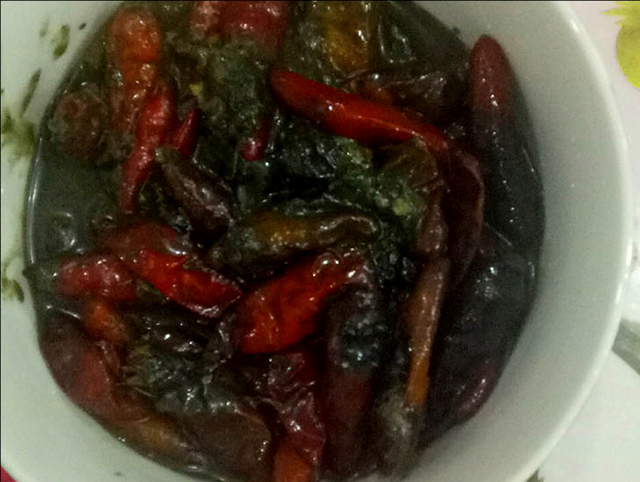
The pungency of fish, the fatty smell of lai oil and spiciness of pepper are the distinct characteristics of padekp.
Indeed, after my first taste, I always asked my friend to spare me some padekp before a trip to the highland, and naturally that meant some grilled or deep-fried xanh fish to accompany the condiment. Xanh fish is tasty however it is cooked, but when grilled or fried, a pinch of salt pounded with forest pepper grown by the villagers would intensify the unique local taste. In traditional recipes, grill xanh fish on charcoal, best when fresh; or braise it with rớn vegetable - a dish suitable for drinking mates to enjoy.
Padekp became a specialty for many reasons. Originally from Laos, xanh fish swims along the A Sap River to the regions of Nam Dong, A Luoi, and is tasty and safe as it only lives in the streams and never feeds on the muddy riverbed. The entrails are clean as the fish only eats floating algae on the water surface.
For a pot of padekp, 200 grams of xanh fish’s guts are needed to mix with 200 grams of hot red chili of small sizes. The smaller the chili, the better. Chili ingredient was not so much of an issue, but to gather 200 grams of fish guts, there must be at least 1kg of xanh fish. Other ingredients, besides commonly found spices available in the kitchen, must include lai oil, a seed-extracted oil from lai tree in the forest to create exclusive flavor to padekp. It is advisable to use unrefined rock salt to marinate the fish guts in a glass pot or pottery jar. Allow the brew to sit still for 3 months for fermentation and avoid any movement to prevent spoilage.
The pleasant aroma of fish, the fatty smell of lai oil and spicy chili peppers are distinct characteristics of padekp. Most households in A Luoi have at least a padekp jar. For special guests, the host uses padekp as a condiment to eat with meat, but quite often, it can be served as dipping sauce for vegetable, potatoes, or cassava to make an adequate meal.
This time to A Luoi, I departed earlier to follow my friend to buy xanh fish. A Tram, an experienced xanh fish catcher and seller, said: "xanh fish has become rarer these days, and can only be caught in the upstream; perhaps from 1-1.5 kg/day to the maximum.” Today, A Tram caught just above a kilo of fish, so I paid as much as he offered to sell, as long as I could try its fabulous dishes.
Story and photo: QUOC TUAN
